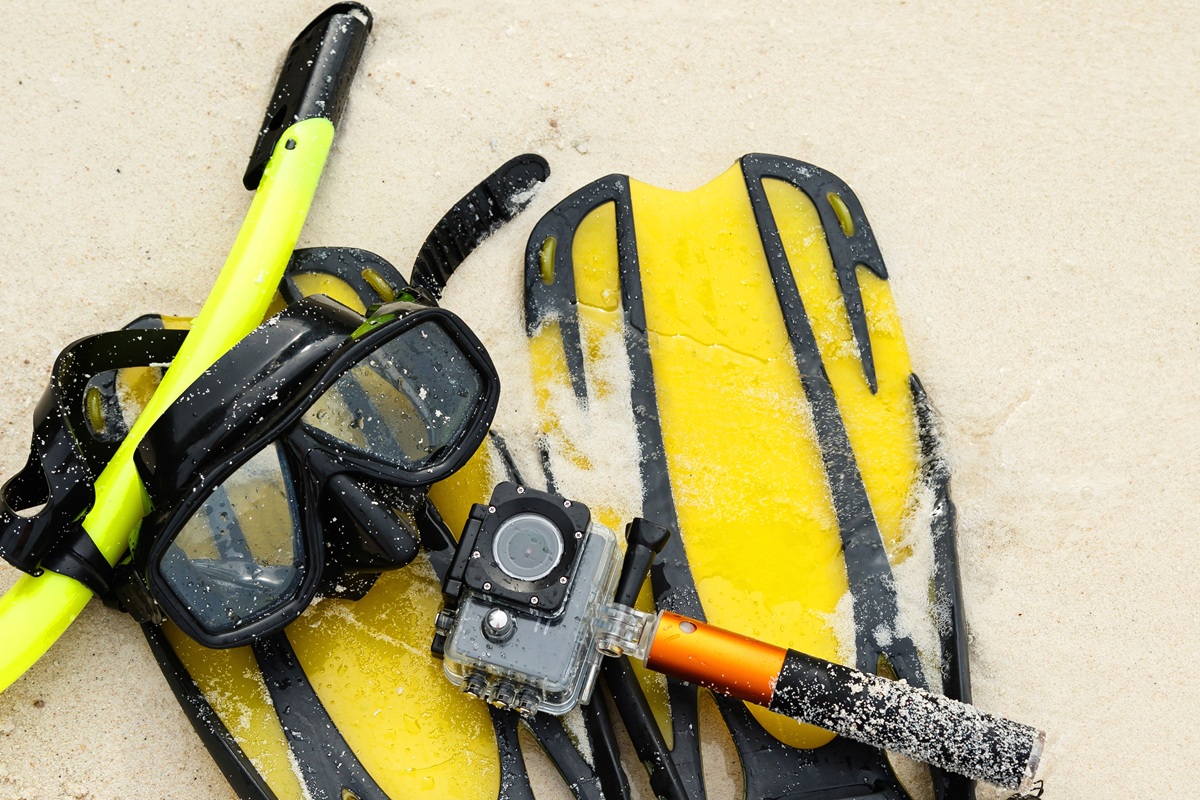
But that realization quickly fades away when you come to the understanding that you need to somehow make it happen. You start imagining yourself with the scuba gear: dragging a massive metal bottle at the airport, with breastplates and flippers. Or not, you’ll just pay hundreds of bucks for the overweight.
Either way, that is exactly what it looks like when you travel with scuba gear, right? Wrong!
How to Travel with Scuba Gear
Know What’s Essential (and What Isn’t)
Before you even unzip your suitcase, decide which pieces of scuba gear you truly need to bring. For frequent divers who are particular about fit and hygiene, packing essentials like your mask, regulator, and dive computer makes sense. These items are small, personal, and can be pricey to replace abroad. On the other hand, bulky equipment like tanks, weights, and sometimes fins can easily be rented at most dive shops worldwide. Reputable shops — such as those supplied by scuba gear experts — offer well-maintained equipment that is regularly checked and serviced.
Pack Smart, Not Heavy
Your mission is to gain the greatest possible level of protection with the least amount of bulk. Use a lightweight wheeled bag — a hard case will help protect valuables and breakables. Wrap your regulator in a soft towel or clothing, and invest in a sturdy box to carry your mask. You can also use a mesh bag for small bits and pieces and then use it as a gear duffel at your destination. And if you’re tight on weight, wear your dive watch and carry your computer and logbook in your carry-on. These are fragile and irreplaceable items.
Use Airline Allowances Wisely
Most airlines allow checked luggage of up to 23 kg (51 lbs), but divers can exceed this limit using the sports equipment allowance. Some airlines consider scuba diving equipment to be sports gear and will allow extra weight or one extra piece of luggage at a reduced price. Always consult the airline’s policy prior to purchasing the ticket.
Pro tip: pack your wetsuit flat across the top of your clothes — it is light, and will protect clothes from other items.
Renting Abroad: The Minimalist Move
If you’re flying, don’t want to haul a ton of gear (literally and metaphorically), or hitting up multiple dive spots, try renting your kit on site. It’ll run cheaper than luggage overage charges and, for most recreational dives, make more sense — plus local dive shops will have the right gear for the region. Always give your rented equipment the once-over before hitting the water: check for cracked hoses, breathe test the regulator, and make sure the BCD inflates and deflates.
Keep It Clean and Ready
Salt, sand, and dampness are the mortal enemies of all your gear. After every dive, freshwater wash all your equipment well, then dry thoroughly before you repack it. When flying home, leave everything unzipped for a while so that the humidity trapped inside can escape. The next time you suit up, it will be for diving, and not battling fuzz.
Traveling with scuba gear doesn’t have to feel like a logistical nightmare. By planning ahead, making smart selections, and being strategic about where you use rental gear, you can scale down the carry-on and still dive deep into the world’s most beautiful waters.
Like this:
Like Loading…
Please visit:
Our Sponsor
